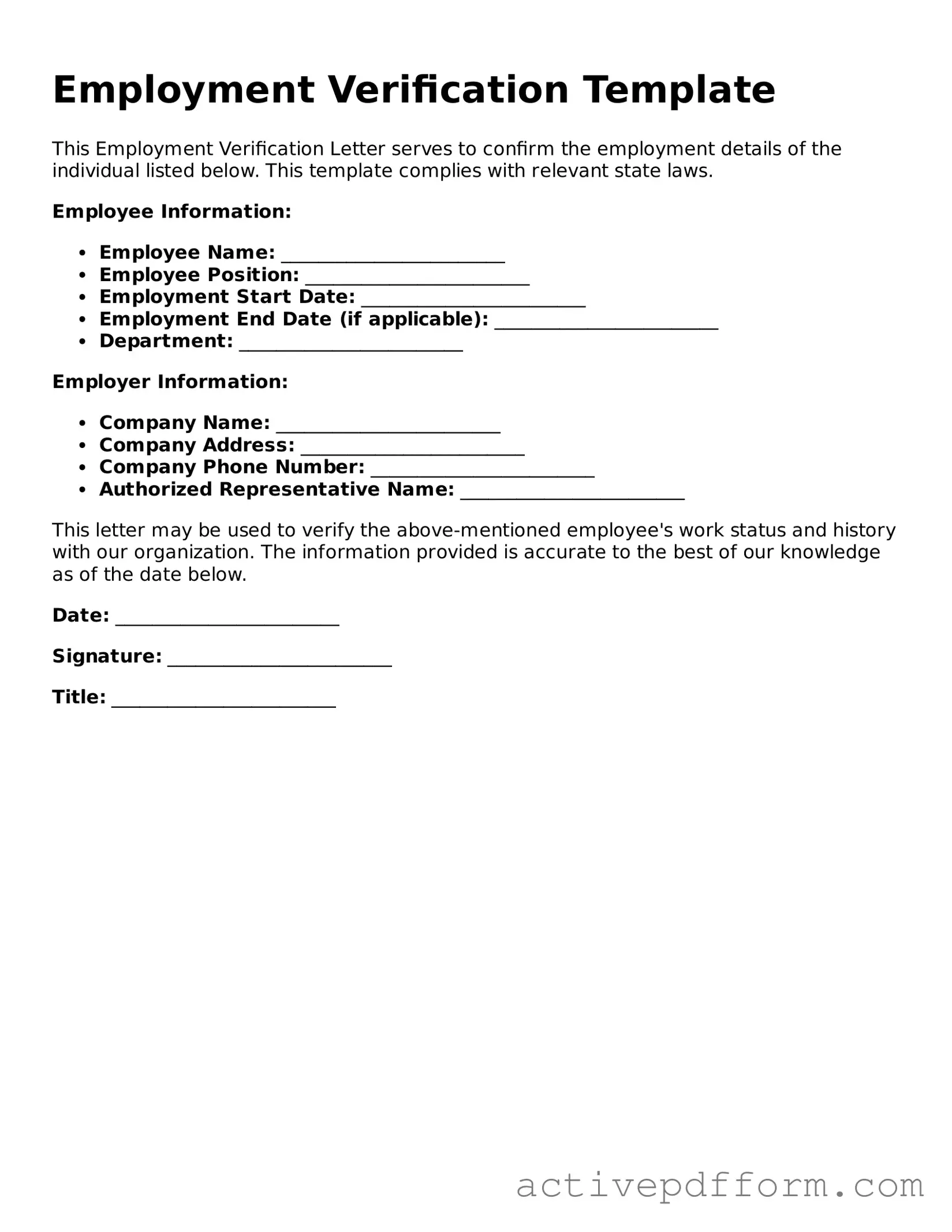An Employment Verification form is a document used by employers to confirm an individual's employment status. This form typically includes details such as the employee's job title, dates of employment, salary information, and sometimes the reason for leaving the position. It serves as a reliable source of information for future employers or financial institutions assessing the individual's background.
This form is often filled out by current or former employers at the request of an employee. It may also be completed by a third-party verifier, such as a background check company or a lender, who is seeking to confirm an individual's work history and income. Employees may need this verification for various reasons, including applying for a new job, securing a loan, or renting an apartment.
What information is typically included in an Employment Verification form?
Typically, an Employment Verification form includes the employee's name, job title, employment dates, salary or hourly wage, and sometimes the reason for leaving. Some forms may also require the employer to provide information about job performance or eligibility for rehire. Each employer may have their own format and required details, so it’s essential to check with the specific company.
How long does it take to process an Employment Verification request?
The time it takes to process an Employment Verification request can vary widely. In many cases, it may take just a few days, especially if the request is straightforward and the employer has a streamlined process in place. However, if the request requires additional verification or if the company is busy, it could take longer. It's advisable to follow up if you haven't received a response within a reasonable timeframe.
Can I get my Employment Verification form if I was terminated?
Yes, even if you were terminated, you can still request an Employment Verification form. Employers are generally obligated to provide this information, as it is a factual representation of your employment history. However, the details regarding your termination may be included, depending on the company's policies and the circumstances of your departure.
Is there a fee for obtaining an Employment Verification?
Most employers do not charge a fee for providing Employment Verification. However, some third-party services that conduct background checks may impose a fee for their services. It’s always a good idea to clarify any potential costs upfront before proceeding with a request.
What if my former employer refuses to provide Employment Verification?
If a former employer refuses to provide Employment Verification, it can be frustrating. In such cases, you may want to ask for clarification on their policy regarding employment verification requests. If necessary, you can seek alternative documentation, such as pay stubs, tax forms, or offer letters, to support your employment history when applying for jobs or loans.
Can I dispute information on my Employment Verification form?
If you find inaccuracies on your Employment Verification form, you have the right to dispute that information. Contact the employer who provided the verification and explain the discrepancies. They may be willing to correct the information or provide a revised form. If the issue persists, you may need to seek legal advice, especially if the inaccuracies affect your employment opportunities or financial standing.
